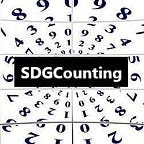Real Countries, Real Data
After the 2016 High Level Political Forum, many countries are picking up speed in planning their counting systems for the SDGs. Hear what they are saying.
The vast and detailed needs of the Global Indicator Framework for monitoring the Sustainable Development Goals are demanding, especially for smaller and less developed countries. The Voluntary National Reviews held during the UN High Level Political Forum in July 2016 highlighted several examples of how countries are counting and monitoring.
Since the July HLPF meeting, more countries are beginning to publicize their data needs, plans, and achievements.
Last month, Kenya, Nigeria, Tanzania and the Marshall Islands began their own conversations around SDG data collection at the national level.
Kenyan news source Coast Week posted an article dedicated to SDG monitoring. Mwangi Kiunjuri, Cabinet Secretary in the Ministry for Devolution and Planning, stated that beginning in 2017, Kenya will be able to start reporting on 128 of the 230 Indicators.
Nigerian news brought attention to the importance of youth and grassroots organizations in providing SDG data. Nigeria has multiple data partnerships currently in place to provide data collection and monitoring throughout the life span of the SDGs.
Tanzania called for more private sector action in monitoring SDG data. Private sector investment is necessary for Tanzania, and other African countries, to provide the technology needed to successfully collect and analyze SDG data.
The Marshall Islands are another country this month to enter the conversation on SDG data collection. Building data capacity beyond UN involvement is paramount for monitoring and achieving the SDGs in the long term.
